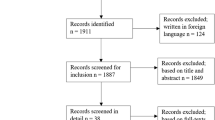Abstract
Objective
Google+ is one of the most actively used Social Networking Sites in the world. The aim of our study is to characterize the Google+ communities related to diabetes and identify the factors associated with the activity level of these communities.
Methods
We conducted a systematic search for diabetes-related Google+ communities. We categorized the principal objective of eligible communities into six themes: (1) awareness creation, (2) providing support and sharing experience, (3) product or service promotion, (4) diet-related topics, (5) exercise-related topics, and (6) others. The themes for the posts were: (1) asking for information, (2) providing information, (3) expressing emotion, and (4) advertisement.
Results
We included 145 Google+ communities and 378 posts for analysis. Majority (80.0%) of the communities were focused on “General Diabetics”, 11.8% were focused on “Type 1 diabetes”, 6.2% were focused on “Type 2 diabetes”, and 2.1% were focused on “Gestational diabetes”. Majority of the communities (35.2%) had the principal objective “Provide support and share experience”. Regarding the user-generated posts, 29.6% posts had at least one “+” (“+” is similar to “like” in Facebook), 17.7% posts had comments, and 89.2% posts had external links. Majority of the posts (69.6%) were focused on “General diabetes”, 16.9% were focused on “Type 1 diabetes”, 12.4% were focused on “Type 2 diabetes” and 1.15 were focused on “gestational diabetes”. The top two themes of the posts were “Providing information” (72.8%) and “Advertisement” (31.5%).
Conclusion
Our study revealed that major activity of diabetes-related Google+ communities was related to providing support and information. However, the accuracy and effectiveness of the information in the communities need to be scrutinized further from clinical perspective.

Similar content being viewed by others
References
WHO. Diabetes fact sheet. http://www.who.int/mediacentre/factsheets/fs312/en/. Accessed June 2, 2015.
eBizMBA. Top 15 most popular social networking sites. 2015. http://www.ebizmba.com/articles/social-networking-websites. Accessed June 2, 2015.
Armstrong N, Powell J. Patients perspectives on health advice posted on internet discussion boards: a qualitative study. Health Expect. 2009;12(3):313–20. doi:10.1111/j.1369-7625.2009.00543.x.
DiMatteo MR. Social support and patient adherence to medical treatment: a meta-analysis. Health Psychol Off J Div Health Psychol Am Psychol Assoc. 2004;23(2):207–18.
Al Mamun M, Ibrahim HM, Turin TC. Social media in communicating health information: an analysis of Facebook groups related to hypertension. Prev Chronic Dis. 2015;12:E11.
Author information
Authors and Affiliations
Corresponding author
Ethics declarations
Conflict of interest
None.
Ethics approval
Not required.
About this article
Cite this article
Mogi, Y., Abedin, T., Ahmed, S. et al. Social Networking Sites for Peer-Driven Health Communication: Diabetes-Related Communities in Google+. Diabetol Int 8, 323–327 (2017). https://doi.org/10.1007/s13340-017-0311-5
Received:
Accepted:
Published:
Issue Date:
DOI: https://doi.org/10.1007/s13340-017-0311-5




